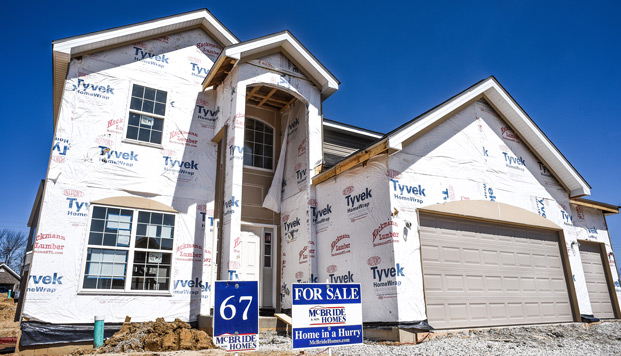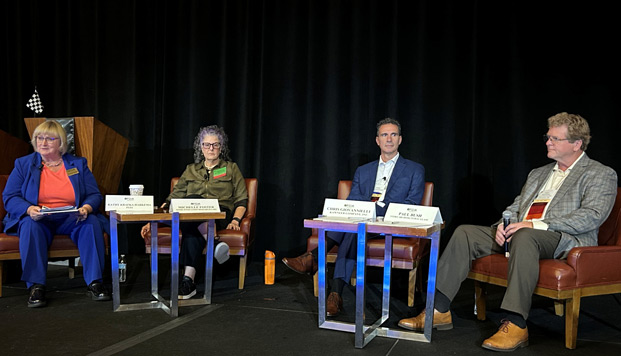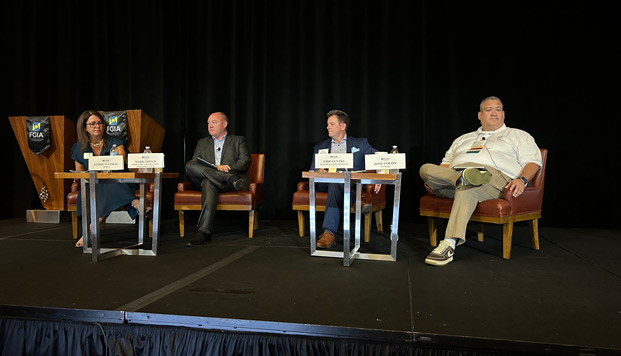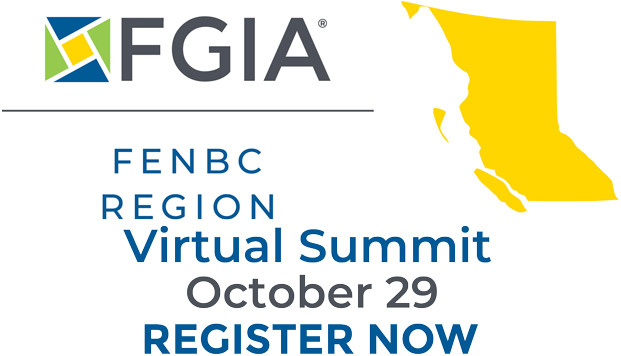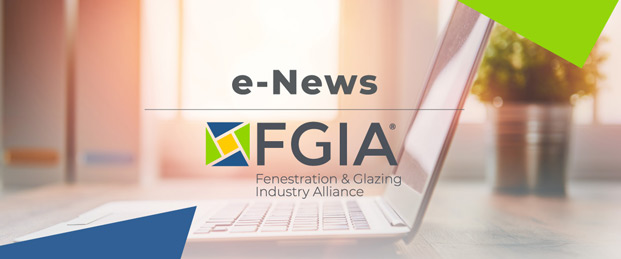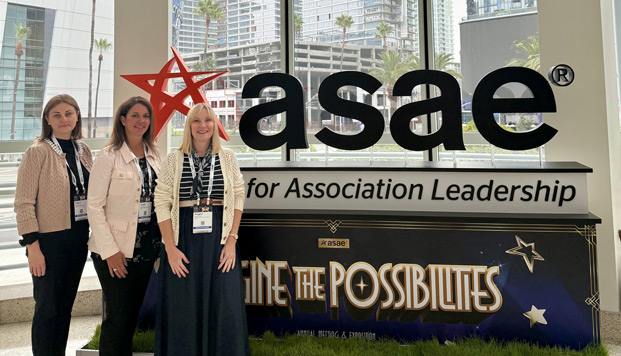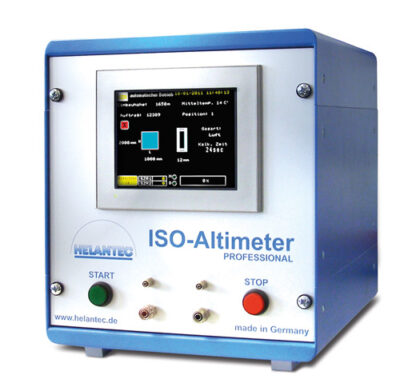

Explore the latest updates and helpful articles.
Frequently Asked Questions
Review answers to our most commonly asked questions related to membership, events, product certification, technical publications, professional education, and more.
What time zone will the event take place?
The schedule for in-person events will follow the venue’s time zone.
The schedule for virtual events will be set in the central time zone.
Who is eligible to access the Members Only information on the FGIA website?
Only representatives of FGIA Corporate member companies or individuals included in Professional or Technical Consultant memberships have access to members only information of the FGIA website. If you are unsure if your company is a member, search our member directory.
What is the cost of FGIA membership?
The cost of membership is dependent on the selected membership type and membership parameters. If applying for Corporate Membership, dues are calculated according to the dues schedule and are based on a company’s North American sales revenue from fenestration and glass products.
Dues fees for Professional Membership dues for an individual membership total $150. Technical Consultant Membership dues total $650.
What are the benefits of FGIA membership?
General benefits of FGIA membership include development of product and component performance standards, networking opportunities, updates on codes information and industry developments, discounts on conference registration, reduced prices on publications and market studies, access to members-only information on our website, free subscriptions to newsletters and priority access to industry-related technical support from FGIA staff. Visit the Join FGIA page to learn more.
Note: FGIA offers a number of membership options, and benefits vary depending on the member selection. Learn more about each option on the Corporate Memberships and Individual Memberships pages.
How do I obtain an individual login for members-only content?
If you are already listed as a contact under your company’s membership, click the Sign In button in the top left-hand corner of the website and choose “Forgot my password” to have your username and password information emailed to you.
If the automated system indicates that your email address is not on file, you will need to be added as a secondary contact under the membership in order to obtain an individual log-in for the Members Only area. Please request that your company’s main contact add you to the membership or contact [email protected].
Are there any sponsorship opportunities available for events?
Yes. FGIA offers a robust sponsorship package tailored to the needs of FGIA’s members, whether they are small or large businesses. Visit the FGIA Sponsorship page, or contact [email protected] to secure your sponsorship level.
How do I access the presentations for the Virtual Summer Summit?
Password protected access to the event presentations will be provided via Vimeo.
Will chats be allowed during the Virtual Summer Summit or is it in listen-only mode?
Chats among participants are highly recommended throughout the day, however we ask that questions for presenters to be submitted through the event platform Q&A function. For more interaction, participants are encouraged to unmute their mics and ask their questions live.
Will there be committee or task group sessions during the Virtual Summer Summit?
There will not be committee or task group sessions at this event.
Will there be networking opportunities for virtual participants?
As we know from past experience, networking during virtual sessions can be challenging; therefore, we are focusing on the educational content of the event.
Is this a conference that was changed to a virtual setting?
No, this is a two-day event (Tuesday and Wednesday) with up to five hours of education focused-content each day.
- Task group work will not be included
- There will be a residential and commercial track
- The sessions will cover fenestration, insulating glass, components, testing, code and regulatory activities
- Breaks (15 minutes) will be offered between sessions
What are the Virtual Summer Summit registration fees?
Members
- Early Bird (through 5/20)
- Individual $350
- Company Registration (up to 5 participants) $875
- Company Plus Registration (5+ participants) $1,750
- Extended (through 6/3)
- Individual $400.00
- Company Registration (up to 5 participants) $925 Company Plus Registration (5+ participants) $1,800
- Regular (beginning 6/13)
- Individual $450
- Company Registration (up to 5 participants) $975
- Company Plus Registration (5+ participants) $1,850
- Company Registration (Up to 2) $1,600.00
As a new participant, how can I learn more about what to expect at the FGIA Summer Summit?
FGIA is committed to helping you make the most of your time at all of our events. In the week prior to the summit, a link will be provided to join the sessions, where expert speakers will share their insights.
In addition, tips for staying connected will also be shared, including how to ask questions, connect with other participants and how to access meeting materials. Beyond your participation at the summit, an online resource provides information on committee participation and balloting procedures, as well as other useful information. However, if you need more information, please contact [email protected].
Can my colleagues attend using the same link for virtual events?
All participants will receive an email containing their unique link to connect to the event.
Can non-members register online?
Non-members must submit a paper registration form to sign up for FGIA events.
Do I have to be a member to attend an FGIA event?
Non-members are welcome to attend an FGIA event at the non-member rate. However, after attending two events, non-members are required to join the association before attending future events.
Must I register prior to the start of the event?
For planning purposes, it is preferred to have participants register in advance; however, all are welcome (different fees may apply).
I am a member trying to register online but I do not have my username and/or password. Where can I find this information?
If you are not able to login, please complete one of the following options to retrieve/reset your login credentials before registering for this event:
- If you know your FGIA username, use that information to reset your password here.
- If you do not know your FGIA username, use this link to request it via your email address and follow the instruction in the email to reset your password.
- If you are unable to reset your credentials, contact us at [email protected].
What is the FGIA event cancellation policy?
Refunds will be issued (less a $100 service charge per registration) if submitted prior to the deadline listed on the event registration form and website.
What options are included in the Virtual Summer Summit registration fee?
Participants will receive password protected access to all session materials via Vimeo.
Is tax applied to the event fees?
Event fees for all registrants (regardless of their location) for events hosted in Canada, including virtual registration for hybrid events broadcasted from a venue in Canada, are subject to Canadian federal sales tax. For events hosted in British Columbia (BC), the 5% GST will be applied to the total event fees.
Where can I get more information about the FenestrationMasters program?
The most up-to-date information about the FenestrationMasters program can be found here.
If you would like to join the FenestrationMasters informational email list, please contact Angela Dickson, AAMA Marketing Manager, and you’ll receive periodic program notifications and updates related to new course availability.
What are the credentials available through the FenestrationMasters program?
There are two different credentials available through the program:
Certified FenestrationMaster: To qualify for advanced certification, a four-year degree in engineering, architecture or applied sciences and four years of full-time fenestration-related experience is required OR 6 years of full-time experience in the fenestration industry.
Certified FenestrationAssociate: No minimum education or experience is required to be eligible for this level.
Both credential levels require successful completion of applicable coursework, as well as achieving the required score on the certification exam.
What course topics are covered in the FenestrationMasters program?
Courses cover a wide range of subject matters including performance standards, product and material types and code requirements. Three course topics are currently available: product types and design considerations, window and door performance standards and proper glass selection. More course topics will be available throughout 2010 and 2011, including:
- Code Requirements
- Coatings and Finishes
- Installation Documents
- Energy and Thermal Performance
- Skylights and Daylighting
- Blast Hazard Mitigation
- Window and Door Hardware
- Framing Material Considerations
- Acoustical Performance
- Sealants and Adhesives
How do I renew my InstallationMasters® certification?
AAMA licensed the InstallationMasters™ program (training, testing and certification of window installers) several years ago to Architectural Testing, Inc. of York, PA. They can be reached at 717-764-7700.
What is the difference between the FenestrationMasters and the InstallationMasters programs?
AAMA created both the FenestrationMasters® and InstallationMasters® programs. Due to the association’s long-standing history of writing standards and influencing codes, coursework and certification programs are a natural progression, and these certification programs help to educate industry professionals in not only the issues affecting the industry but also in some of the very issues that AAMA has helped to influence.
The AAMA FenestrationMasters program is a nationwide program for professionals in the window, door, skylight, curtain wall, storefront and sloped glazing industries, which was launched during the GlassBuild America show in 2010. The FenestrationMasters program offers training content based on consensus-based AAMA standards.
To gain the FenestrationMasters professional certification, the curriculum and certification exam must be completed. More information about FenestrationMasters is available here.
Please contact [email protected] to join the informational mailing list, through which you’ll receive updates related to new course availability.
The InstallationMasters program is a nationwide training and certification program for new construction and replacement installers of windows and exterior glass doors in residential and light commercial markets. More information about the InstallationMasters program, including dates and locations of upcoming classes, online training options and a list of accredited instructors by location, can be found here.
Can I receive continuing education credits through AAMA? How can I obtain these credits?
As the leading trade association for the residential and commercial window, door and skylight industry, AAMA provides architects, specifiers, engineers, contractors and building officials with important and up-to-date information on materials, product technology and innovation. In addition to our classroom program, distance education is easy to access through AAMA. Our courses are online and ready at your convenience.
Where appropriate, we’ll even process your credits directly with the American Institute of Architects (AIA) and send you a certificate of completion. Click here for a listing of authorized course presenters.
Education & Resources
FGIA is invested in the professional growth of its members and the industry. Our goal is to help companies and individuals differentiate themselves and increase their credibility by offering their customers the benefit of employees who have gained a well-rounded education on the fenestration and glazing industry.
FGIA Education Center
Develop your knowledge and skills with professional education.
Helpful Resources
FGIA has a vast library of articles and information relevant to your industry.
